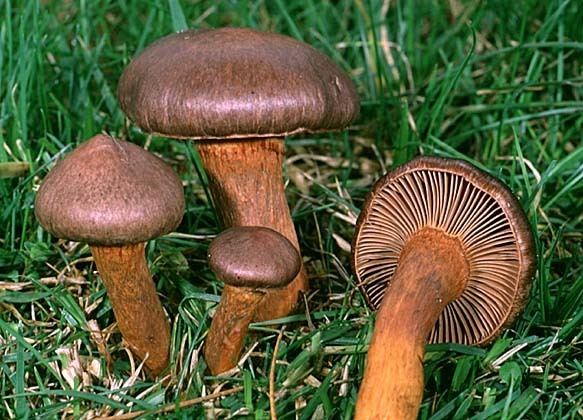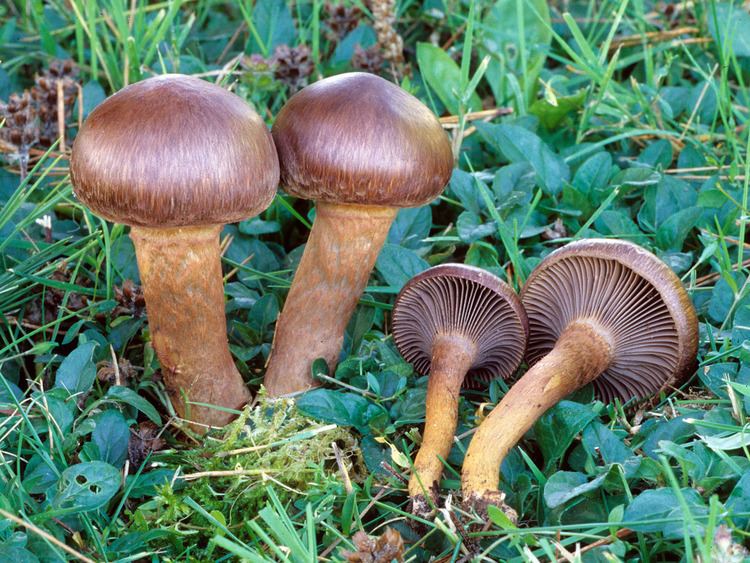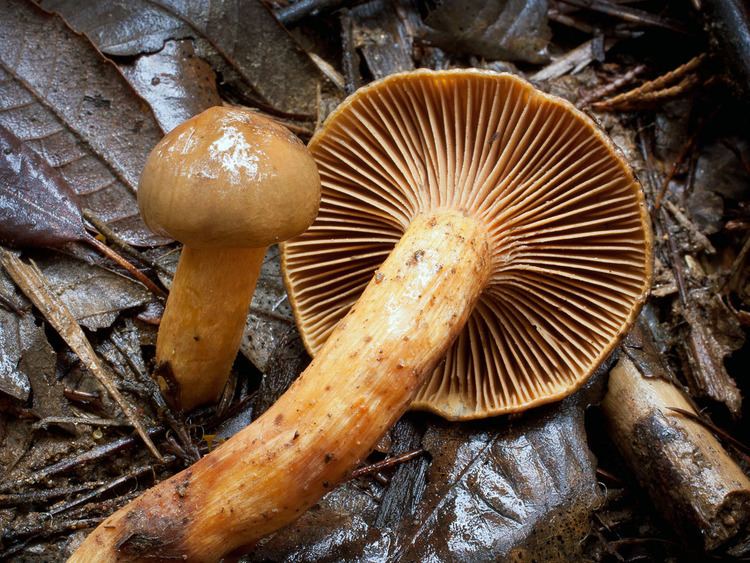Rank Genus | Division Basidiomycota Suborder Suillineae | |
 | ||
Similar Chroogomphus rutilus, Gomphidius, Gomphidiaceae, Chroogomphus helveticus, Gomphidius glutinosus | ||
Chroogomphus vinicolor fungi kingdom
Chroogomphus /kroʊ.əˈɡɒmfəs/ is a genus of mushrooms commonly known as pine-spikes or spike-caps based on their shape and because they are often found growing in association with pine trees. The genus is distributed throughout the Northern Hemisphere including North America, the Caribbean, Europe, and Asia.
Contents

Taxonomy

These fungi are members of the family Gomphidiaceae which are agaricoid members of the Boletales (suborder Suillineae). Related to the genus Gomphidius (in which they were once classified), Chroogomphus are distinguished from Gomphidius by their lack of a partial veil.

The genus name is derived from the Greek χρω- chroo-, meaning 'skin' or 'colour', and 'γομφος' gomphos meaning 'plug' or 'large wedge-shaped nail'.
Ecology

Members of this genus have been thought to be ectomycorrhizal with various species of pine, however, there is now evidence that all members of the Gomphidiaceae are parasitic upon other boletes. Specifically, Chroogomphus species are thought to be parasitic on various conifer-associated Suillus species, with this parasitism often being highly species-specific. In the Pacific Northwest of North America, C. tomentosus is found with western hemlock (Tsuga heterophylla) and Douglas-fir (Pseudotsuga menziesii), while C. helveticus of Europe is found in conifer forests containing spruce (Picea ssp.).
Species
Chroogomphus rutilus (image), found in Europe, is the type species for this genus. It has been the subject of investigation as the source of antibiotics, as well as other potentially useful secondary compounds.
The cap is up to 10 cm in diameter and red-brown in colour. The widely spaced gills are brownish-orange and decurrent with black to brownish-yellow spores. The stalk is brownish-yellow and tapers toward the base. The flesh is orange to salmon-coloured and turns violet when chewed.
Chroogomphus ochraceus (image) of North America is very similar in habit and appearance to C. rutilus, and the latter name has often been misapplied to C. ochraceus.
Chroogomphus vinicolor (image), another North American species, is likewise similar to C. rutilus, although C. vinicolor tends to be smaller. The cap color is variable in both species, with C. vinicolor being, as its scientific name suggests, more wine-colored while C. rutilus is usually more brown. The most distinctive differences between these three species are microscopic.
Other species within genus Chroogomphus include:
Edibility
Chroogomphus rutilis, C. ochraceus, and C. vinicolor are edible and interchangeable for culinary purposes. They are not, however, regarded as flavorful and possess neither a distinctive taste nor odor. One food writer states:
They are excellent when dried, have a firm chewy texture but almost no flavor. This means you can put them in any dish without worrying about overpowering them - there's nothing to overpower! They make an excellent textural addition, though, a little crunchy, a little rubbery, very pleasant. Use them in tomato sauce as a meat substitute, or in a spicy Thai curry. You can't go wrong, because you can't taste them.
